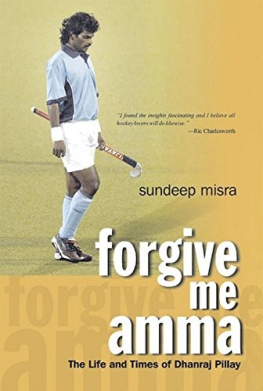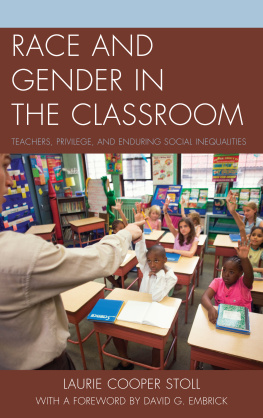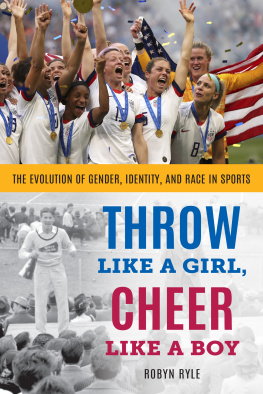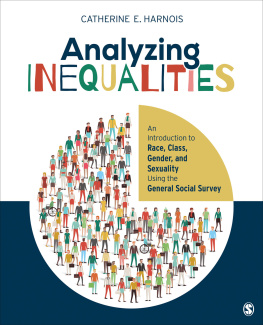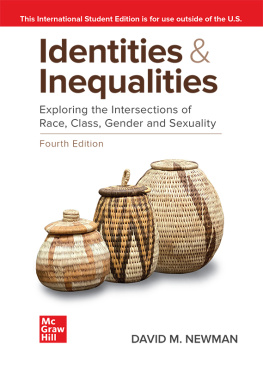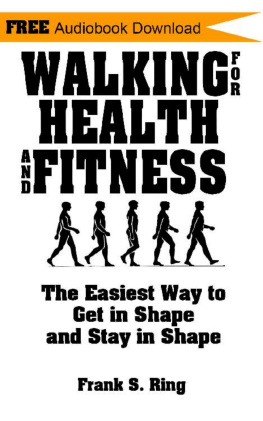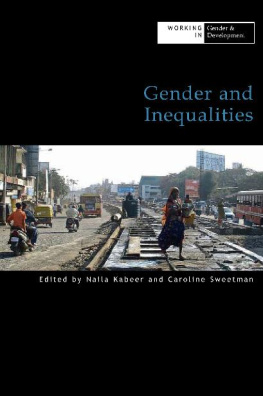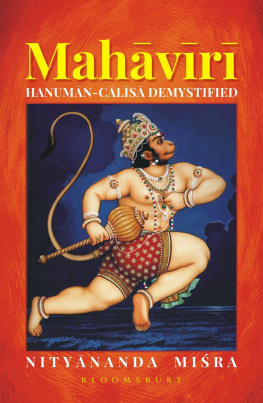University of California Press
Oakland, California
2022 Joya Misra and Kyla Walters
Library of Congress Cataloging-in-Publication Data
Names: Misra, Joya, 1967 author. | Walters, Kyla, 1987 author.
Title: Walking mannequins : how race and gender inequalities shape retail clothing work / Joya Misra and Kyla Walters.
Description: Oakland, California : University of California Press, [2022] | Includes bibliographical references and index.
Identifiers: LCCN 2021033435 (print) | LCCN 2021033436 (ebook) | ISBN 9780520384644 (cloth) | ISBN 9780520384651 (paperback) | ISBN 9780520384668 (epub)
Subjects: LCSH: Retail tradeUnited StatesEmployees. | Retail tradeSocial aspectsUnited States. | Equality.
Classification: LCC HD 8039. M 4 U 65 2022 (print) | LCC HD 8039. M 4 (ebook) | DDC 331.7/38114dc23
LC record available at https://lccn.loc.gov/2021033435
LC ebook record available at https://lccn.loc.gov/2021033436
Manufactured in the United States of America
31 30 29 28 27 26 25 24 23 22
10 9 8 7 6 5 4 3 2 1
For retail workers everywhere, and with gratitude to the Movement for Black Lives
Acknowledgments
Many people supported this books creation. While we cannot hope to thank everyone involved by name, we appreciate you all. The project started as an analysis of workers and customers visiting fancy new malls in Doha, Qatar, which were springing up like mushrooms amid a growing, global city that also had traditional and new souks. A sudden return home, due to health issues, and the loss of fieldnotes and transcribed interviews in transit, meant that the project came to a halt. Academics fear these moments of losing data and access, but they can be transformational.
One of the key insights from the work in Doha seemed surprisingly similar back in the United States. In Doha, employers literally advertised for workers based on their nationality, gender, and age. Yet in the United States, walking through the malls, it was soon apparent that although advertisements were open, the workers in stores were surprisingly uniform. Our partnership solidified when we co-taught a course on consumption and inequality. We owe a debt of gratitude to the students in that course, who provided us with thoughtful insights on their experiences shopping and working in malls, and who carried out shopper observations in a range of stores, which allowed us to identify where to focus our attention. Based on this work, we knew we wanted to look at stores aimed at teens and people in their early twenties that focus on promoting themselves as not just clothing stores but lifestyle brands.
Soon afterward we began collecting data in earnest. Our shopper observations allowed us to develop a more systematic understanding of how the work was organized, and more importantly, who was doing the work. The websites of the stores we targeted tended to emphasize their interest in building a diverse workforce, yet the workers all seemed white or racially ambiguous. This deepened our interest in thinking about how race is embedded in aesthetic labor, how it is both hypervisible and invisible in the organization of the work. While we were able to interview many workers and some frontline managers, corporate managers were unwilling to respond to requests for information and interviews.
Our colleagues were enormously supportive of this project. We had the good luck to be embedded in an area with many superb scholars of race, gender, and labor, both faculty and doctoral students, who were willing to give feedback on early drafts and listen to us talk endlessly about our research. Among the most helpful and patient were our Connecticut River Valley colleagues: Irene Boeckmann, Steven Boutcher, Enobong Hannah Branch, Michelle Budig, Debadatta Chakraborty, Dan Clawson, Mary Ann Clawson, Celeste Curington, Jennifer Curtin, Derek Doughty, Naomi Gerstel, Venus Green, Sanjiv Gupta, Clare Hammonds, Tom Juravich, Miliann Kang, Jasmine Kerrissey, Veda Kim, Agustin Lao-Montes, C.N. Le, Jennifer Lundquist, Ragini Saira Malhotra, Sancha Medwinter, Eunmi Mun, Yaln zkan, Anthony Paik, Z. Fareen Parvez, Cassaundra Rodriguez, Wenona Rymond-Richmond, Laurel Smith-Doerr, Marc Steinberg, Eiko Strader, Donald Tomaskovic-Devey, Eve Weinbaum, Nancy Whittier, Melissa Wooten, and Jon Wynn. A talk at the University of New Hampshire, made particularly fun and exciting by Cliff Brown, Rebecca Glauber, and Catherine Moran, involved another friendly, insightful set of interlocutors. We also appreciate the support of James Joseph Joseph Dean, Melinda Milligan, and Debora A. Paterniti.
We also had opportunities to give talks at conferences, most notably at Eastern Sociological Society and American Sociological Association meetings, as well as a 2016 preconference on precarious labor. At meetings, we often overlapped with and received incisive feedback from colleagues. We wish to thank Augustus Anderson, Stefan Beljean, Paul Carruth, Yasemin Besen-Cassino, David Brady, Julia Beckhusen, Francisco Chico Raul Cornejo, Cedric de Leon, Marlese Durr, Giovanna Fullin, Kjerstin Gruys, Peter Ikeler, Patrick Inglis, Jerry Jacobs, Arne Kalleberg, Joseph Klett, Marcel Knudson, Linda Laughlin, Robin Leidner, Kevin Lin, Laurie Ann Michaels, Michele Lee Maroto, Jennifer Nelson, Eileen Otis, David Pettinicchio, Dana Prewitt, Robert J.S. Ross, Brian Serafini, Carrie Shandra, Chris Tilly, Steven Vallas, Kelcie Vercel, Phoenix Chi Wang, Christine Williams, and Zheng Zhao. From this group, Yasemin Besen-Cassino, Peter Ikeler, and Eileen Otis deserve special mention for their consistent engagement with our work. You made our work better.
The book itself was the true slog. Figuring out how to organize the enormous amount of data we had collected took more time and effort than we had imagined possible. Here, our friends truly supported us, allowing us to talk incessantly about the findings and how they fit together, including Michael Ash, Zeke and Rafi Ash, Enobong (Anna) Branch, Kristen Barber, Tristan Bridges, Matthew Charity, Dan Clawson, Celeste Curington, Derek Doughty, Krista Harper, Miliann Kang, Marina Karides, Ivy Ken, Jennifer Lundquist, Ragini Saira Malhotra, David Mednicoff, Juyeon Park, Deirdre Royster, Sudha Setty, Mohan and Mira Setty-Charity, Wendy Simonds, Laurel Smith-Doerr, Donald Tomaskovic-Devey, and Adia Harvey Wingfield. We are also deeply grateful to members of writing groups, including Amel Ahmed, Sonia Atalay, Debbie Felton, Ximena Gmez, Holly Hanson, Serin Houston, Beth Jakob, Miliann Kang, Amy Lonetree, Cathy Luna, Kristen Luschen, Melissa Mueller, Teresa Nguyen, Kimberlee Prez, Lise Sanders, Caroline Yang, and Youngmin Yi. Many folks also read chapters or drafts of the manuscript, including Kristen Barber, Kjerstin Gruys, Miliann Kang, Eileen Otis, Adia Harvey Wingfield, and the anonymous reviewers from the University of California Press, who graciously commented on the entire manuscript and improved it enormously.
Special thanks to Naomi Schneider, Summer Farah, Julie Van Pelt, Jon Dertien, and the diligent folks at UC Press. We are enormously grateful to the excellent Letta Page and Sharon Langworthy, who played a key role in making the manuscript readable. Much gratitude to Zeke Ash and Shelby Casimir for their thorough reading of the entire manuscript to help us make the text one that undergraduate students could readand would enjoy. Thanks also to the Labor Action and Research Network for supporting this project.




